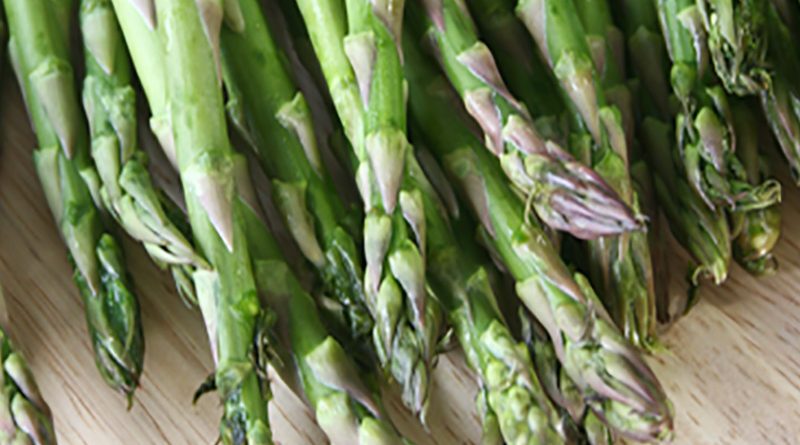Asparagus 101
Asparagus 101

Local asparagus in season has a sweetness and vibrant flavour that isn’t found in imported spears that have travelled hundreds of miles. If you don’t believe me, do a blind taste test with imported asparagus vs. local – I guarantee you will be able to tell the difference. The best way to enjoy asparagus at its peak is simply cooked and dressed with just a bit of butter or olive oil and a sprinkling of salt. A squeeze of fresh lemon is also delicious.
Different Types of Asparagus
Asparagus comes in a range of colors, with slight variations in flavor and texture among them.
Green
Green asparagus have a mild, grassy flavor and are the most common variety found in the United States. Purple-tinged tips are a sign of freshness and tenderness.
Purple
These sweet Italian varietals have a sugar content that can be up to 20 percent higher than green asparagus. Their dramatic color is only skin deep, however, and vanishes when the spears are cooked.
White
White asparagus are cultivated by mounding soil or sand around the stalks as they grow to deprive them of sunlight and prevent them from turning green. The resulting spears have a subtle nutty flavor and creamy texture.
Pencil
Pencil asparagus are a marketing term for ultra-thin spears that have been harvested from younger plants. They are usually tender enough to eat raw.
How to Select
Look for asparagus with tightly closed tips, firm stalks that don’t flop or bend, and ends that seem fresh and moist, not woody or dry. Select bunches of similar-size asparagus so that they cook evenly in a given recipe
How To Store
Uncooked asparagus will stay fresh for three to four days in the refrigerator. The secret is to keep asparagus cool and damp. Right away when you get home, cut a little bit off the ends of your asparagus. Then, store spears upright in a container with the stems wading in about an inch of water and cover loosely with a plastic bag. You can also wrap the ends in moist paper towels and drop the bundle into a plastic bag.
How to Prepare Asparagus for Cooking
Asparagus doesn’t require much prep work to get it ready. Wash the spears and dry them thoroughly. The woody ends are tough so it’s best to remove them. If you hold an asparagus spear and bend it, it will naturally break where the tough part ends. However, I usually just trim the ends – cut where the ends turn from woody and pale to green and vibrant, usually an inch or two from the bottom. The spears can be peeled if the skin is tough and stringy, which sometimes happens with thicker spears. However, I usually don’t bother.
How to Cook Asparagus
Asparagus cooks quickly so it’s a great way to add a vegetable to the dinner menu. It’s also very versatile so it can be used in soups, lasagnas, pastas, tarts, quiches or stir fries. There are a number of ways it can be cooked:
Roasted:
Toss asparagus with a bit of oil and roast in an even layer on a baking sheet at 425 degrees Fahrenheit for 12 to 15 minutes.
Steamed:
Steam spears in a steamer basket or small amount of water until just tender, about 5 to 7 minutes.
Grilled:
Prepare a hot grill and brush asparagus with a small amount of oil. Grill for about 2 to 3 minutes per side (you might want to use a grill pan, to keep the spears from falling through the grate).
Stir-Fried:
Heat a small amount of oil in a skillet on high heat. Add asparagus and stir fry for about 2 minutes. Add a tablespoon of water or broth and cook until just tender, about 3 to 4 more minutes.
This site contains product affiliate links. We may receive a commission if you make a purchase after clicking on one of these links.


